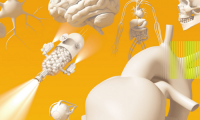-
Edible Battery To Power Internal Medical Devices
- Source: popsci
- 784
- December 21, 2017
-
4 Tips for Purchasing Medical Devices
- Source: Ddu
- 1,056
- December 21, 2017
-
Surgical Device Company Virtual Incision Raises $18 Million in Series B
- Source: xtalks
- 801
- December 18, 2017
-
FDA suggests controls on interoperable devices
- Source: massdevice
- 785
- December 14, 2017
-
Gottlieb Announces More Regulatory Updates to Encourage Device Innovation
- Source: hcanews
- 809
- December 12, 2017
-
Streamlined CFDA Review Process — New Opportunities in China
- Source: brandwoodbiomedical
- 887
- December 8, 2017
-
FDA approves first implanted lens that can be adjusted after cataract surgery to improve vision without eyeglasses in some patients
- Source: Prnewswire
- 786
- November 23, 2017
-
Bristol-Myers, J&J sink cash into a new $95M European biotech fund
- Source: Endpts
- 821
- November 3, 2017
-
US FDA finalises new guidelines for medical device development
- Source: medicaldevice-network
- 711
- October 30, 2017
-
China to adjust registration management for drugs and medical devices
- Source: china-briefing
- 1,405
- October 23, 2017
your submission has already been received.
OK
Subscribe
Please enter a valid Email address!
Submit
The most relevant industry news & insight will be sent to you every two weeks.













